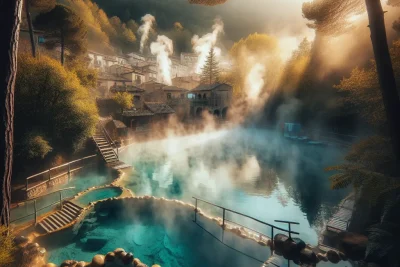
The Largest Artificial Rock Reef in the World: A Marine Miracle in Catalonia
In recent years, the Mediterranean Sea has faced numerous challenges, including overfishing, pollution, and habitat destruction. However, a remarkable initiative in Catalonia has provided a glimmer of hope for marine biodiversity. The Biòtop, the world’s largest artificial rock reef, has transformed a once-barren underwater landscape into a thriving ecosystem. This monumental project, a dream 17 years in the making, is now home to thousands of marine species and has become a focal point for conservation efforts in the region.
Origins of the Biòtop Project
The vision for the Biòtop was spearheaded by Miquel Rota, an entrepreneur from Penedès with a deep passion for the ocean, who operates a diving center in Torredembarra. After 15 years of dedicated work and facing numerous bureaucratic hurdles, Rota’s plan to create a giant underwater mountain finally came to fruition. The artificial reef, located in Torredembarra in the Tarragona province, stands 22 meters tall and spans an area equivalent to a soccer field, with a total weight of about 40,000 tons.
The construction utilized limestone rocks that are over 25 million years old, sourced from the Tarragona reefs, ensuring that the material was ideal for fostering a new marine habitat. The effort to build such a massive reef aimed to provide a safe and nurturing environment for various marine flora and fauna, especially in a region that has experienced significant ecological strain.
A New Home for Marine Life
Two years after its completion, the success of the Biòtop has exceeded all expectations. Initially born out of a desire to restore marine life, the reef has now become a sanctuary for many endangered and protected species. One of the most significant aspects of this reef is its designation as a no-fishing zone, allowing marine creatures to thrive without human interference.
Unexpected Growth and Biodiversity
The Biòtop has seen an unprecedented explosion of life, prompting amazement among scientists. Species such as gorgonians and corals have begun to grow naturally, creating a vibrant underwater landscape. Additionally, huge schools of fish have found refuge, using the structure for breeding, feeding, and shelter. Notably, 11 threatened species and nine protected species have established a comfortable dwelling within the reef.
One remarkable observation is the presence of moon fish, which have flocked to the Biòtop for cleaning by local fish, a unique interspecies relationship that was previously undocumented. The delicate nudibranchs, marine mollusks, have also made the Biòtop their new home, showcasing the reef's ecological value.
Community Involvement and Support
The success of the Biòtop is not just attributed to its founder but also to the collaborative efforts of several stakeholders. The project garnered support from private individuals and companies, including a significant backing from the BMW Group. Though the process of obtaining the necessary permits was fraught with challenges, the Catalan government ultimately approved the construction, marking a pivotal moment for marine restoration efforts in the area.
Natural Art Reefs: Leading the Way
To further promote marine conservation, Rota established the nonprofit organization Natural Art Reefs in 2012. This organization aims to create and manage projects that enhance marine habitats along the Torredembarra coastline. Through their initiatives, they have developed over a hundred unique artificial reefs using various innovative systems, demonstrating the dedication and ambition behind the Biòtop and similar undertakings.
The Future of Marine Conservation
The Biòtop stands as a beacon of hope and a model for future marine conservation projects around the world. It emphasizes the importance of sustainable practices and the role artificial reefs can play in restoring marine ecosystems. As scientists continue to study the effects of the Biòtop, there is much to learn about biodiversity recovery and the rebuilding of ecosystems.
Moreover, the project's success underscores the collective responsibility of society in preserving ocean health. Initiatives like the Biòtop can serve as a catalyst for similar projects globally, inspiring communities to invest in their natural environments actively.
Final Thoughts
The story of the Biòtop is a testament to the power of vision, determination, and unity. Miquel Rota’s dream and the collaborative spirit of the community have culminated in one of the most significant marine restoration projects to date. It remains crucial for us to advocate for and support such efforts that not only benefit marine life but also ensure the longevity of our planet's richest natural resources. As we look toward the future, the Biòtop serves as a powerful reminder that hope and action can breathe new life into our oceans.
If you want to know other articles similar to A Marine Miracle: Discovering the World’s Largest Artificial Rock Reef in Catalonia you can visit the Daily News category.




